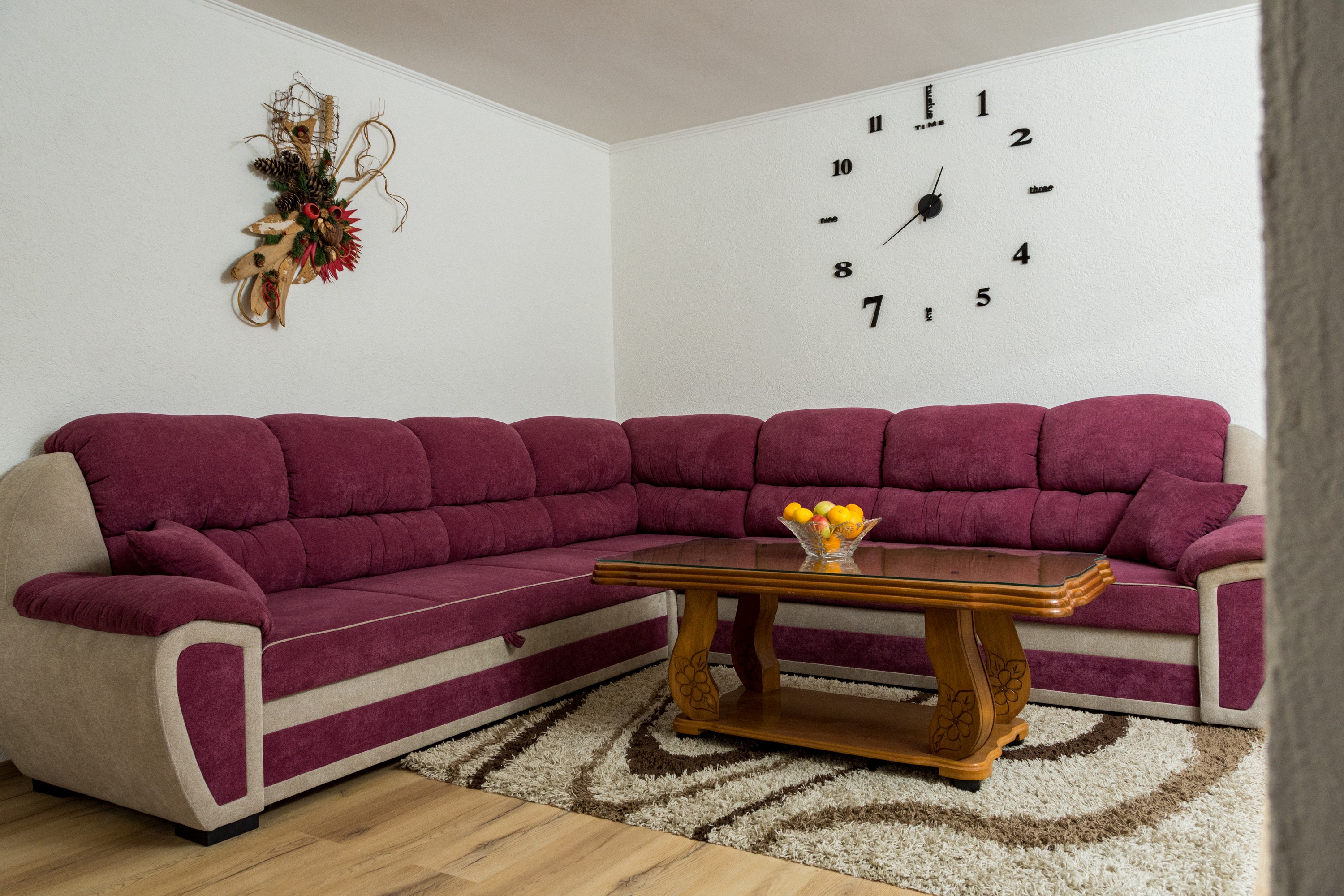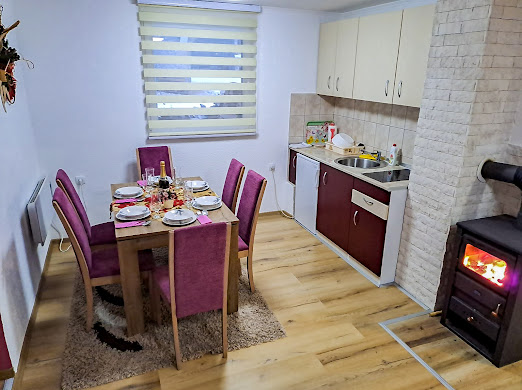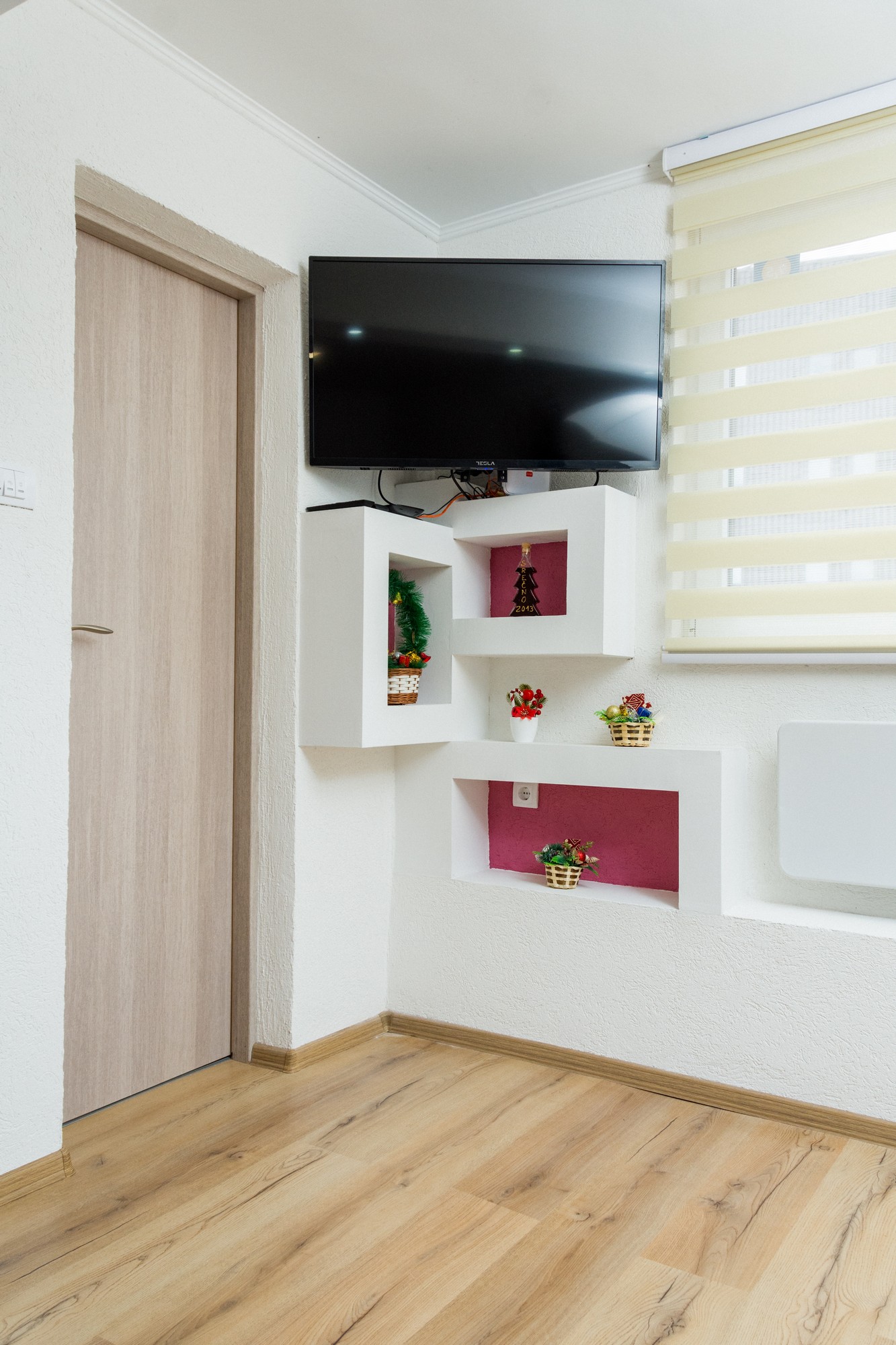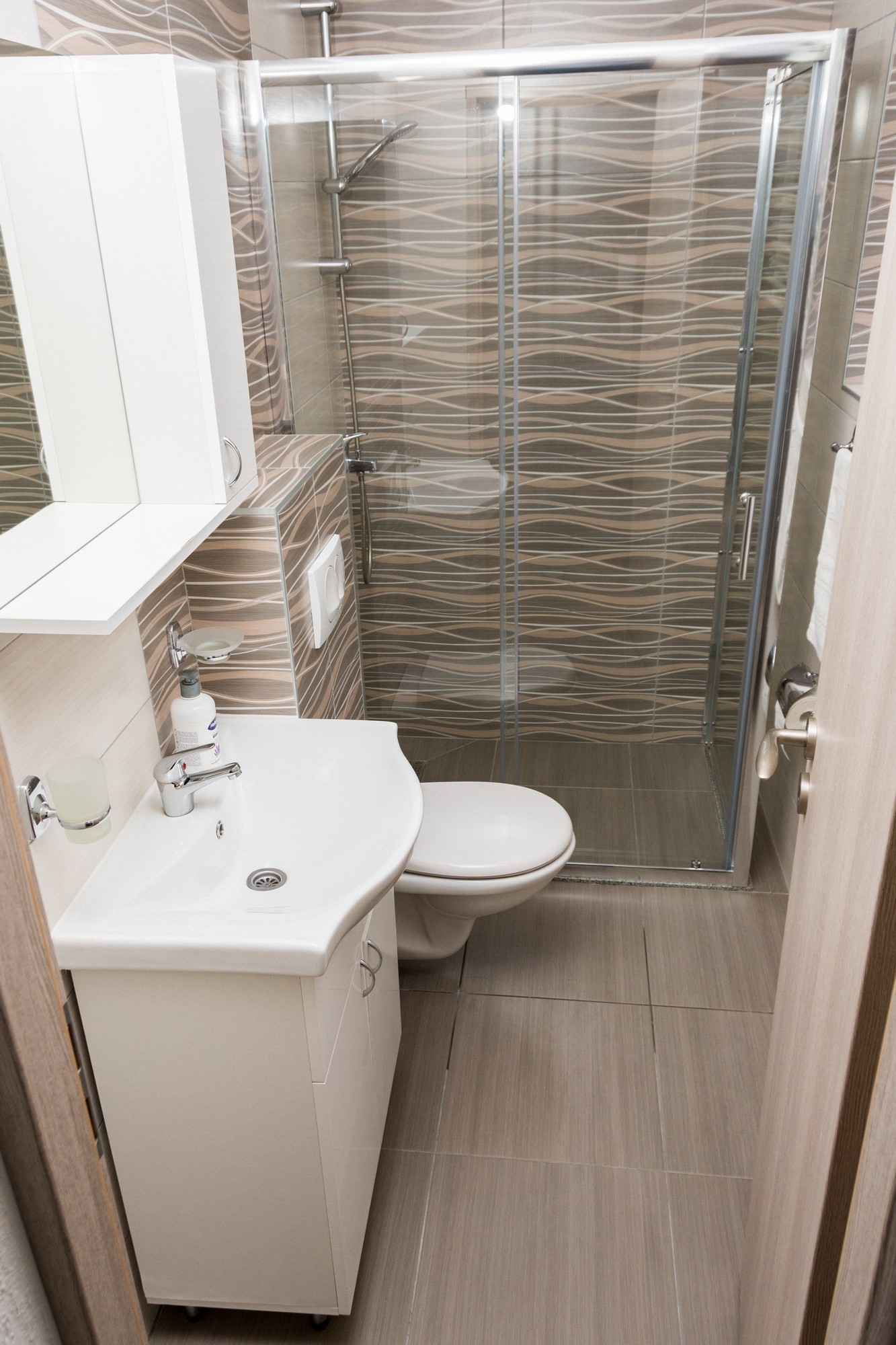When to visit Jahorina?
- Winter - Jahorina is the most visited during winter. In the winter, this mountain mostly attracts skiers and fans of other winter sports, such as snowboarding and alpine skiing.
- Summer - Jahorina becomes increasingly attractive in the summer thanks to the numerous activities and entertainment that enrich its offer. The potential for adrenaline sports and numerous well-maintained hiking trails in the summer attract lovers of dangerous thrills and those who want to relax on the mountain.
How to get to Jahorina?
- By car - If you decide to travel by car to Jahorina, we recommend the route Belgrade - Loznica - Mali Zvornik (border crossing), Vlasenica - Pale. The distance from Belgrade to Jahorina is about 320 km, and it will take you between 5 and 6 hours to travel. From Zagreb, opting for the route via Banja Luka and Sarajevo is best. The distance between Zagreb and Jahorina is about 430 km, so it is estimated that it takes about 7 hours to travel from Zagreb to Jahorina. The distance from Podgorica to Jahorina is 256 km, and the travel time is slightly less than 5 hours.
- By bus - Jahorina can be reached by bus on the line to Sarajevo or Pale. You can find direct departures for Jahorina from Sarajevo or Pale. Traveling by bus from Belgrade to Sarajevo takes about 8 hours; the cheapest ticket is about 4,000 RSD. From Podgorica to Jahorina, the easiest way is to take a bus to Pale; the journey takes about 7 hours. There are also direct lines from Zagreb to Sarajevo. The cheapest bus ticket from Zagreb is RSD 5,300-7,400.
- By plane - The fastest option for traveling to Sarajevo is by plane, at least in Belgrade and Zagreb. The flight from Belgrade to Sarajevo by AirSerbia takes less than an hour, and the price of a return ticket is around RSD 14,000. There is also a direct flight from Zagreb to Sarajevo. The price of a return ticket is around RSD 14,000, and the flight takes less than an hour. There are no direct flights from Podgorica to Sarajevo, but only with a stopover in Vienna, which significantly increases the travel time and raises the plane ticket price to almost 25,000 RSD.
Activities for tourists on Jahorina
- Skiing - Skiing is the most developed winter activity in Jahorina. 47 km of the total ski route is divided into 24 tracks. Night skiing on Jahorina is also offered, and a 5 km ski track has been prepared. Jahorina also has 10 km of trails for Nordic skiing. The price of a seven-day ski pass in the post-season and pre-season is 275 euros for adults and 325 euros in the peak season. A day ticket for adults costs 41 euros pre- and post-season and 62 euros in the peak season.
- Skydive - is located by the lake at the top of Poljica. Skydive gives you an unusual ride over a landscaped lake, where you will enjoy a panoramic view of Jahorina. The price of a skydive ride is 7 KM for adults and the same amount for children.
- Loopster or Ballerina - In 8 cabins, you can experience different ways of driving, from calm and light to real adrenaline. Cabs turn in both directions and around their axis during driving. The price of one ride is 7 KM for both adults and children.
- Paragliding - is one of the activities we recommend not to skip if you find yourself on Jahorina. The flight is performed in tandem with an instructor and usually lasts about 15 minutes.
- The tower - is a relatively new attraction in Jahorina, located on the Poljica plateau. It is a 9-meter-high tower that you climb by pulling a rope. Depending on the speed and strength of the rope pull, you climb so fast. During the ascent, the tower rotates around its axis, allowing you to see the panorama of Jahorina from all angles. The price of a ride to the Tower is 7 KM for both adults and children.
- Hiking/biking trails - Jahorina is known as a place that nature lovers like to visit. Two hiking trails have been arranged in this way: the Path of Love - length 2,513 m, total ascent 73 m, estimated duration of the walk 45 minutes and Path of Health - length 8,108 m, total ascent 135 m, estimated duration of the walk 180 minutes. In addition to this, there are also mixed trails for cycling and hiking. There are three trails: the Olympic trail - with a length of 4,203 m, a total ascent of 133 m, and the estimated duration of the walk on this path is 90 minutes. m, total ascent 276 m.
Events and festivals in Jahorina
- EXIT Festival 84 - is a music festival that takes place in mid-March and lasts for three days. During its duration, Festival 84 gathers more than 20,000 electronic music fans.
- The International Documentary and Feature Film Festival Prvi Kadar - takes place in November. The festival is held at the Cultural Center Istočno Novo Sarajevo premises. The goal of the festival is the popularization of film and animated art. The festival hosts many, primarily domestic but also foreign renowned artists.
- Biathlon Open Championship - held on the slopes of the Nordic ski center Dvorišta in February. It gathers more than 100 competitors. The technical organizer of the competition is the Skiing Club of Romania. The competition lasts two days.
- Days of Duško Trifunović - is a literary event traditionally held annually in Pale. The event is dedicated to the life and work of Duško Trifunović, a Serbian writer, poet, and television author. This event annually brings together poets, writers, and actors from Republika Srpska and the region.
- The open championship in alpine skiing - is open and is held in Jahorina in mid-March. The competition, whose technical organizer is the Jahorina Ski Mountaineering Society, is in two disciplines - slalom and giant slalom.
- Đuđevdanski Uranak - organized by the Romanija Pale Mountaineering and Ecological Society. The event gathers a large number of nature lovers and mountaineers. The event is often marked by a climb or hike to some natural attraction of Jahorina.
Activities for children in Jahorina
- Ski schools - Jahorina offers many options for children to learn to ski. Children can choose whether to study through individual lessons or in a group. Group classes are slightly more affordable and are held twice a day, unlike individual courses, which are usually held once daily.
- Poljice - and its attractions, such as skydiving, tower, and ballerina, are intended for different ages so that children can have fun on them in addition to adults. Poljice also has the Olympic Arena, which includes an open-air gym and a children's playground.
- Playgrounds - Playgrounds for children in Jahorina are most often located within the hotel. So you can find entertainment for your little ones in the playrooms of Hotel Termag, Hotel Board, and Hotel Bistrica.
What to see in Jahorina?
- Orlovača Cave - is one of the biggest and most important attractions of Republika Srpska. It is located on Orlovača hill, Sumbulovac village in Pale municipality. The cave is 2.5 km long and is the only cave in the territory of Republika Srpska equipped for visits. The cave is significant because of the remains of a cave bear that was found in it. In addition to the bones of the cave bear, certain archaeological details were also found, such as ceramic fragments from the Mesolithic, then ammonites - inhabitants of the Mesozoic sea, an ax between 2,500 and 3,500 years old, and finally bricks from the period of ancient Rome. The stalactites and stalagmites found in the cave have an impressive appearance and are very beautifully lit, further enhancing the impression of the environment. The Orlovača Cave is open throughout the year, from April 15 to October 15, every working day, except Sunday and Monday, at regular times: 09:00, 12:00, and 15:00. The tour of the cave is organized for groups of 15 visitors with a guide, which lasts from 30 to 45 minutes.
- Goli Koran Nature Park is located 1000 m above sea level and only a kilometer from the center of Pale. Located on the slopes of Jahorina, this place is a favorite picnic spot for Paljana of all ages. A dense coniferous forest, an outdoor gym, and numerous cycling and jogging paths attract all lovers of nature and active vacations. Lately, Goli Koran is often visited by ATV drivers because of the terrain suitable for these vehicles.
- Novak Cave - is an attraction that justifies the nickname of Romania - Hajdučka Gora. This cave was named after the epic hero Starina Novak, who, according to legend, hid there because of the cruelty of the Cursed Jerina. The cave is located above the locality of Careve Voda and belongs to the municipality of Pale. There is a well-maintained and well-marked road to Novak's cave. Novak's cave is a frequent destination for mountaineers and camping enthusiasts. Novak's field is not far from Novak's cave, a place suitable for camping and rest. The road to the cave is reinforced with cables because it is steep and difficult.
Accommodation in Jahorina
- Jahorina apartments - Private Jahorina accommodation is much cheaper than hotel accommodation. You can find apartments near the ski slopes, with excellent amenities, at a price of 30 euros. Apartments Strahinja 1 and Strahinja 2 stand out as private accommodations accommodating more people. These are apartments located in the Šator weekend complex.
- Hotels - Hotel Termag and Hotel Vučko stand out as the exclusive and most famous hotels on Jahorina. Termag Hotel Jahorina is located next to the ski slopes in Jahorina. In addition to accommodation, this hotel offers two restaurants and a wellness center with an indoor pool, sauna, and Turkish bath. In the Apart Hotel Vučko, guests have a wine bar, a lounge with a fireplace, and a spa center. Accommodation prices in these hotels range from 95-120 euros in the peak season. Hotel Lavina, located 30 meters from the ski lift, has a similar price range as these hotels. Hotel San, Hotel Board, and Hotel Dva Javora stand out as more affordable hotels, yet not far from the ski slopes, where the average price of accommodation ranges from 40-60 euros.
Phone numbers of important services
- East Sarajevo bus station +387 (0) 57 317 377
- Pale bus station +387 (0)57 222 900
- Pale Health Center +387 (0)57 223 383
- Road condition +387 1282
- RS road assistance +387 1285
- Pale Police +387 (0)57 223031; 057204100; 122 (freephone)
- Pale post office +387 (0)57 226 001
- Taxi Pale +387 (0)57 340 200
- Pale fire department +387 (0)57 223 159
- Sarajevo railway station +387 (0)33/655-330
- The area code for Bosnia and Herzegovina is +387
Where to eat in Jahorina?
- Restaurant Koliba - This ethnic restaurant is one of the most famous in Jahorina. The cabin is near the Termag Hotel and on the Poljice ski track. The interior, dominated by wood and natural materials, and the terrace, which fits perfectly into the surroundings, contribute to the experience of nature and pleasantness. During the winter, popular music parties are also organized in Koliba.
- Restaurant Vučko - This restaurant is located within the Hotel Vučko and offers many traditional dishes and dishes from Italian, Spanish, and Mediterranean cuisine.
- Caffe Restaurant Lavina - The restaurant's cuisine includes a variety of gourmet dishes from domestic and international cuisine: Asian, French, and Italian. A large number of various drinks are also on offer. The restaurant also organizes parties with club, pop, rock, and fun music; famous bands are often guests.
- Restaurant Rajska Vrata - has an exciting gastronomic offer. Game dishes that were prepared during the Nemanjić era stand out. The offer also includes excellent homemade brandies made from grapes, plums, and wild pears, as well as wines from the best local winemakers and winemakers from the surrounding area. The Rajska Vrata restaurant emphasized the ethnic experience in the food and drink selection and the ambiance.
- Fast food restaurants - Restaurant Burger Bar is a place that offers the most diverse types of burgers. The restaurant is in Trnovo, and its working hours are from 4:00 p.m. to 1:00 a.m. Stazarestoran is where you can order top-quality fast food typical of our climate, such as kebabs, burgers, and other traditional dishes. The trail is located not far from the Jahorina ski center. Apartment Ogorjelica is a restaurant that offers many dishes of national cuisine. The restaurant is located 15 meters from the most famous trail of Ogorjelica and was built in a way reminiscent of traditional mountain facilities.
Where to go out on Jahorina?
- Caffe Bar Peggy is a widely known place in Jahorina. In addition to offering accommodation and operating as a day cafe, this is also a great place for nightlife. It is located near the Poljice ski slope and was built in an ethnic style.
- Freeze ski bar is located on the Ogorjelica trail, above the ski lift. It is a relatively new place, launched to offer après ski fun. The place has a modern look dominated by glass and wood, and the large terrace is great for sunny days. DJs also play music during the day, so music awaits you anytime after you finish skiing.
- Hotel Lavina is another place to have a good time in Jahorina. Along with live music, Hotel Lavina organizes guest appearances by famous musicians from the entire region. During the winter ski season, parties with live music are organized from 10 p.m. to 2 a.m. and every Friday and Saturday from 9 p.m. to 1 a.m. in the off-season.
- The Gondolan restaurant is located in the newly opened center of Ravna Planina. In addition to being an unmissable place for lovers of gastronomic specialties, Gondola also offers a great night out. Parties with live music are organized every day from Thursday to Friday, and the capacity of this place is tremendous.
- Hotel Vuchko is another place with great live music and atmosphere. It is located in the center of Jahorina, near the Poljica ski slope, and popular during night parties. The fact that you should keep in mind is that in case of crowds or a large number of reservations, this hotel gives priority to the guests of its hotel, so if you want to visit it, reserve a place in time.
Transportation and taxi in Jahorina
- Buses - No buses in Jahorina exist, but bus lines to Sarajevo and Pale connect Jahorina.
- Taxi - If you don't have a car, a taxi is your only option for transportation around Jahorina. The number of the taxi station in Jahorina is +387 65 389-297.
Parking and public garages in Jahorina
- Parking prices are 2 KM per hour; a day ticket is 15 KM, while a seven-day ticket is 50-60 KM, depending on the parking place. A deposit of 2.00 KM is required for a 7-day parking ticket. The seven-day and seasonal parking ticket has an unlimited number of passes.
Surroundings of Jahorina
- Hodiđed or Odiđed - was a medieval fortified town, most likely of the lordly Pavlović family, whose remains are located in the village of Bulozi, between Sarajevo and Pale. According to legend, a buried treasure is here, over which a blue flame burns on the eve of the Annunciation.
- Miljacki grad or East Stari grad - was a medieval town of the Pavlović noble family, which was destroyed in the 16th century, and the remains of which are located on the slopes of Paljanska Miljacka and Mokranjska Miljacka. According to legend, this fortress belonged to the wife of Stefan Tomašević, who successfully defended the city from the Turks until a traitor gave them the place from where the city secretly drew water.
- Gradina - was a medieval fortification located in Gornji Pale and represented the administrative center for the area of Palja field and perhaps the wider area of the Pavlović family.
- Trebević - the offer of Trebević, a well-known picnic spot near Sarajevo, is Sunnyland amusement park and Alpine Coaster ride, children's town - playroom, arranged places for barbecue lovers, fields for small and adventure sports, such as mountain bikes, quads, paintball, as well as walking trails. And we offer a tourist coach, Trebević Express, with which you can get to know the sights of Trebević during a one-hour ride.
- Pale and Sarajevo - Given that they are located near Jahorina, Pale, about 10 kilometers, and Sarajevo, about 30, we recommend you set aside a day and visit one of these cities.
History of Jahorina
- Early history - Jahorina was inhabited in prehistoric times, and during the Roman period, it was part of an important trade route that connected Bosnia and Dalmatia.
- Jahorina in the Middle Ages - Bosnian rulers ruled Jahorina. After the fall of the Bosnian kingdom in the 15th century, the mountain belonged to the Ottoman Empire. During Ottoman rule, Jahorina was important because of its forests, which were used for the construction of ships and the production of wood for the needs of the army.
- Jahorina in the 20th century - After the fall of the Ottoman Empire, Jahorina became part of the Kingdom of Yugoslavia and later the SFRY. During the socialist era, Jahorina was a popular ski resort among Yugoslavs, and numerous sports events were held there, including the 1984 Winter Olympics.
- Recent history of Jahorina - After the breakup of Yugoslavia, Jahorina remained a popular ski resort and tourist destination, and various sports and cultural events are still held there today. Today, Jahorina is known as one of the biggest ski destinations in Bosnia and Herzegovina and attracts many tourists worldwide.
Geography and climate of Jahorina
- Geography - Jahorina is a mountain located in the eastern part of Bosnia and Herzegovina, about 30 km southeast of Sarajevo. Geographically, Jahorina belongs to the Dinarida mountain range, and the mountain's highest peak is Ogorjelica, which is 1916 meters above sea level. Jahorina is covered with lush forest, and some of the main mountain peaks are Ogorjelica, Crni vrh, Jahorina, Ravna planina, and Visočica. In the vicinity of Jahorina, there are also the Drina, Neretva, and Prača Rivers.
- Climate - The climate in Jahorina is a typical continental mountain climate. Winters are long, cold, and snowy from November to April, while summers are cool and sunny. The average annual temperature in Jahorina is around 3.5 °C. The high mountains around Jahorina also affect the climate, so fog and cloudiness are frequent, especially in winter.
Demographics of Jahorina
- According to the 2013 census, the municipality of Pale, including Jahorina, had a population of about 16,000.
- Most of the population in Jahorina are Serbs, and there are also smaller groups of Bosniaks and Croats.
- Tourism is an essential branch of the economy in Jahorina, so many people are employed in hotels, restaurants, and other tourist facilities. Many residents also work in nearby Sarajevo or other regional cities.
Tradition and culture of Jahorina
- Name - The original name of the mountain used to be Javorina. The mountain got its name from the mountain of Greek maple, whose northernmost habitat is this mountain. Huge Greek maple trees are a natural attraction of Jahorina even today. Jahorina was established during the Turkish occupation when the occupiers often changed the letter V to H. Today, in East Sarajevo, you can find associations of citizens with Javorina, which preserves the original name from oblivion.
- History of skiing - The history of skiing on Jahorina dates back to the period of Austria-Hungary, more precisely in 1878, when the Austro-Hungarian bourgeoisie built a hunting lodge on Jahorina. Later, under Gola Jahorina, where the ski fields were located, the Sarajevo tourist association Romanija built a tourist lodge in 1935, and an officer's mountain lodge was built a little lower in 1938, open to civilians as well.
- Winter Olympic Games 1984 - The history of skiing in Jahorina peaked when the Winter Olympic Games were held in 1984 in Sarajevo, and a significant part of the disciplines took place in Jahorina. The mascot of the games at that time was the famous Vučko.


































































